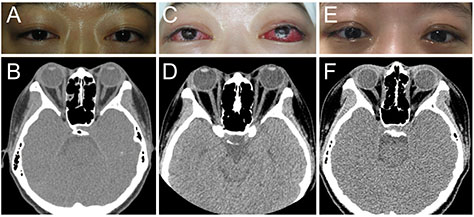Korean J Ophthalmol.
2019 Dec;33(6):575-576. 10.3341/kjo.2019.0037.
Anti-N-methyl-D-aspartate Receptor Encephalitis in a Patient with Thyroid Eye Disease
- Affiliations
-
- 1Department of Ophthalmology, Institute of Vision Research, Severance Hospital, Yonsei University College of Medicine, Seoul, Korea. yoonjs@yuhs.ac
- KMID: 2465140
- DOI: http://doi.org/10.3341/kjo.2019.0037
Abstract
- No abstract available.
Figure
Reference
-
1. Bahn RS. Graves' ophthalmopathy. N Engl J Med. 2010; 362:726–738.2. Behrendt V, Krogias C, Reinacher-Schick A, et al. Bortezomib treatment for patients with anti-N-methyl-d-aspartate receptor encephalitis. JAMA Neurol. 2016; 73:1251–1253.3. De Leu N, Unuane D, Poppe K, Velkeniers B. Seizures and postictal stupor in a patient with uncontrolled Graves' hyperthyroidism. BMJ Case Rep. 2012; 06. 01. DOI: 10.1136/bcr.02.2012.5929.4. Lu J, Samson S, Kass J, Ram N. Acute psychosis in a pregnant patient with Graves' hyperthyroidism and anti-NMDA receptor encephalitis. BMJ Case Rep. 2015; 04. 22. DOI: 10.1136/bcr-2014-208052.
- Full Text Links
- Actions
-
Cited
- CITED
-
- Close
- Share
- Similar articles
-
- Anti-N-methyl-D-aspartate Receptor Encephalitis in Illicit Substance Use
- Anti-N-Methyl-D-Aspartate Receptor Encephalitis Presenting Progressive Dyslexia: A Case Report
- Case of anti-N-methyl D-aspartate receptor encephalitis associated with ovarian teratoma presenting as suicidal ideation
- Anti-NMDA Receptor Encephalitis Which Has Shown Clinical Symptoms of Schizophrenia
- Ovarian teratoma associated anti-N-methyl-D-aspartate receptor encephalitis presenting abnormal behavior


